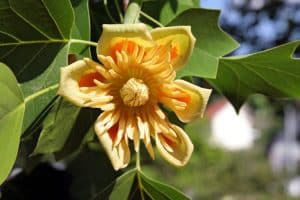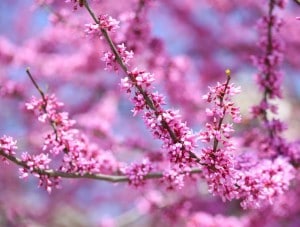 For budding botanists, a trip anywhere means new discoveries and excitement. Though to the untrained eye a tree is a tree and a bush is a bush, those even just slightly more educated about plants and the environment can identify the myriad unique species in a region and find joy in their existence.
For budding botanists, a trip anywhere means new discoveries and excitement. Though to the untrained eye a tree is a tree and a bush is a bush, those even just slightly more educated about plants and the environment can identify the myriad unique species in a region and find joy in their existence.
Niagara is one of the most fertile regions in North America — and thus it is a botanist’s dream. Niagara claims some of the most diverse forest land in all of Canada, with more than 40 percent of rare plants taking root in the region. Explore some of the plants you’ll see on your trip so you can start your adventure into botany as soon as you step foot on the clay Niagara soils.
Terrific Trees
The lush forests around the Niagara region are a continuation of the Carolinian Forest, which has plants similar to those you might spy further south of the Great Lakes. Some of the more identifiable and unique of these include:
- Sassafras
- Flowering dogwood
- Red mulberry
- Black walnut
- Sycamore
- Hop-hornbeam
- Tulip tree
In fact, there are over 70 unique species of trees in Niagara Falls and the surrounding areas. Since the last ice age, spruce trees have been particularly dominant, so when you venture out of your luxurious hotel in the city, you’ll definitely see some of these. Other common trees include evergreen pines and cedars, and you’ll recognize the deciduous trees oak, maple and beech as well.
Fabulous Flowers
 The flowers native to Niagara Falls are, if you can believe it, more varied than the tree species. Literally countless varieties of wildflowers pop up from the fertile soil in the spring and summer, coating the hills and valleys in bright and cheery colors. Most of the flowers that are naturally occurring in the forest appear late spring well after the last snowfall and die out toward the middle of the summer when temperatures are reaching their maximums, so if you’re hoping to catch a glimpse of Niagara in bloom, plan your trip accordingly.
The flowers native to Niagara Falls are, if you can believe it, more varied than the tree species. Literally countless varieties of wildflowers pop up from the fertile soil in the spring and summer, coating the hills and valleys in bright and cheery colors. Most of the flowers that are naturally occurring in the forest appear late spring well after the last snowfall and die out toward the middle of the summer when temperatures are reaching their maximums, so if you’re hoping to catch a glimpse of Niagara in bloom, plan your trip accordingly.
Many of the trees themselves produce gorgeous and unique flowers worth investigating. The tulip tree, though failing to sprout actual tulips, has one-of-a-kind yellow and white buds that look like starbursts. The small white flowers that adorn the flowering dogwood are also particularly impressive in the spring, as are the hundreds of pink buds on the eastern redbud, or “Judas tree.”
Additionally, if you exhaust your explorations of the regions flora in the parks and forests around Niagara Falls, the park system has built an astounding Floral Showhouse full of fantastic tropical flowers, like delicate orchids. You can wander around the Showhouse for a taste of the tropics, or if you come during summer, you can experience the exquisitely tended gardens in the surrounding park. You’ll get the chance to see huge roses, fields of daffodils and organized beds full of chrysanthemums, violas, mayflowers and thousands upon thousands of wildflowers.
Plenty of guidebooks will be able to give interested travelers a more in-depth explanation of the native and introduced flora of the Niagara region. If you’re interested in taking a walk through lush land, Niagara is one of the most desirable locations in the hemisphere.
